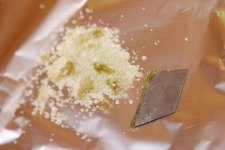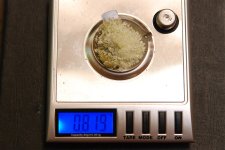As for the whole "is this an A/B?" discussion: I think if we are technical about it, then Snozz is right, in that there IS an acid soak before adding the base therefore one could theoretically call A/B. But I lean more towards Trickster's way of defining it, because the typical A/B's involve the characterizing filtering step. I think its better that we are more 'practical' about the definition and less strictly technical, otherwise cases such as Trickster's microwave example or some other more complicated apparatus might be called A/Bs but it will actually be misleading in the discussions. The same for the topic, I agree with Trickster's suggestion of changing the name to Panoramix vs Gir tek comparison or something of the sort (which is still very interesting of course, but just so people are not misled thinking results can be generalized between a typical A/B and an STB). Maybe we need a new category in the wiki such as 'pre-acid soak STBs' ?
By the way, jbark, that in the STB jars is definitely an emulsion, there is no such thing as 'general gunk' that sits on top of the mimosa. All the polar layer should be together and all the non-polar should be on top neatly separated, this third middle layer is an emulsion. So you can add more lye or pure salt and break it up, as some (maybe little but definitely some) of your solvent will be trapped there.
Those crystals look good already! The yellow could be plant oils, as mentioned, but it could also be a bit of n-oxide formed. I guess we would only know with some analytical equipment, but either way if you put it all together, its smokable

Personally I would suggest maybe redissolving the crystals gotten from naphtha-based extractions in acetone or alcohol/IPA, and evapping again, or letting it air dry for long, just to make sure there isnt any naphtha traces on them.
Anyways, im very curious of the final yields and pictures! Good work so far, jbark! If you want, you can recrystalize that STB stuff. It does happen at times that it is like that, other times its more pure white, or it can be even yellower, it really depends on all the many variables as well as the mood of the gods

and do look into limonene extractions one day, I seriously love them and Im sure you will too





